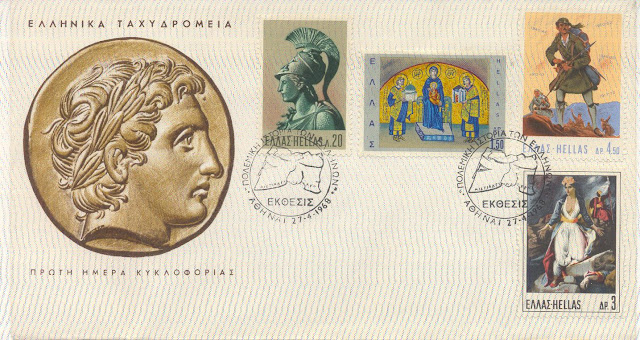Goddess Athena defeating Alkyoneys, Pergamos. Athena separates the Giant Alkyoneus from Earth (in which way he dies), while Gaia, mother of Giants rises from the ground. The goddess Nike helps Athena
Goddess Athena. Athena or Athene, often given the epithet Pallas, is the goddess of wisdom, courage, inspiration, civilization, law and justice, mathematics, strength, war strategy, the arts, crafts, and skill in ancient Greek religion and mythology.
Athena is portrayed as an astute companion of heroes and is the patron goddess of heroic endeavour. She is the virgin patroness of Athens. The Athenians founded the Parthenon on the Acropolis of her namesake city, Athens (Athena Parthenos), in her honour.
Alexander the Great, detail from sarcophagus. The Alexander Sarcophagus is a late 4th century BC Hellenistic stone sarcophagus adorned with bas-relief carvings of Alexander the Great. The work is remarkably well preserved and has been celebrated for its high aesthetic achievement. It is considered the outstanding holding of the Istanbul Archaeology Museum.
Byzantine mosaic. Byzantine art is the name for the artistic products of the Eastern Roman (Byzantine) Empire, as well as the nations and states that inherited culturally from the empire. Though the empire itself emerged from Rome's decline and lasted until the Fall of Constantinople in 1453,[1] many Eastern Orthodox states in Eastern Europe, as well as to some degree the Muslim states of the eastern Mediterranean, preserved many aspects of the empire's culture and art for centuries afterward.
"Constantine Paleologos" painting by D.Tsokos. Constantine XI Dragases Palaiologos, Latinized as Pala
"Greece in Messolonghi" painting by E.Delacroix. Missolonghi (Mesolongi, is a municipality of 34,416 people (according to the 2011 census) in western Greece. The town is the capital of Aetolia-Acarnania regional unit, and the seat of the municipality of Iera Polis Messolongiou (Sacred City of Missolonghi). Missolonghi is known as the site of a dramatic siege during the Greek War of Independence, and of the death of poet Lord Byron.
Sculpture "The Winged Victory of Samothrace". The Winged Victory of Samothrace, also called the Nike of Samothrace, is a 2nd century BC marble sculpture of the Greek goddess Nike (Victory). Since 1884, it has been prominently displayed at the Louvre and is one of the most celebrated sculptures in the world.
Thank you Merja.


No comments:
Post a Comment